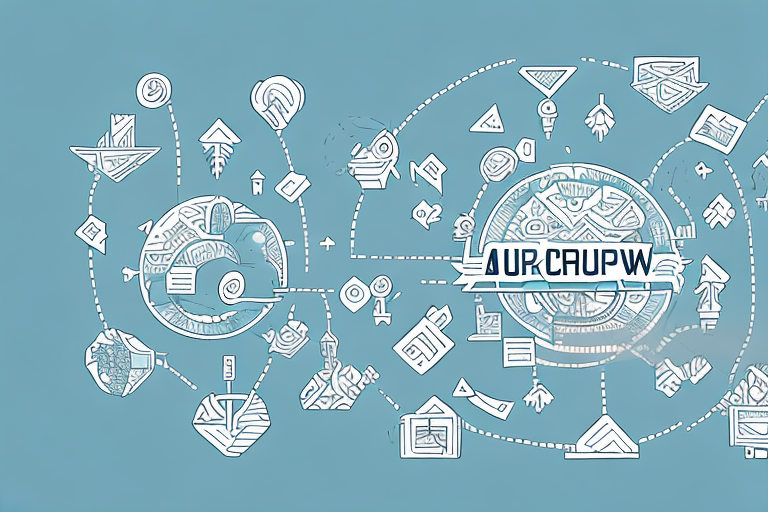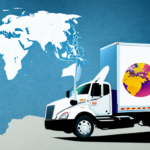Understanding Duty Drawback and Its Role in Supply Chain Management
Supply chain management involves a complex web of interactions and activities that are essential for running a business. One such activity is duty drawback, a process that can provide businesses with significant financial benefits. In this article, we will explore the definition of duty drawback, how it works, and its role in supply chain management strategies. We will also examine its benefits, key industries, filing processes, considerations, latest trends, common mistakes, best practices, case studies, and the future outlook of duty drawback.
The Basics of Duty Drawback: Definition and Process Explained
Duty drawback is a refund of import duties, taxes, and fees that a business can claim when imported goods are either exported or destroyed. Under U.S. law, there are two types of duty drawback: Unused Merchandise Drawback and Manufacturing Drawback.
- Unused Merchandise Drawback: Applies when an imported item is exported and declared unused. The exporter must provide proof of both the original import and the subsequent export. The refund equals 99% of the duties, taxes, and fees paid on the original import.
- Manufacturing Drawback: Applies when an imported item is used in a finished product that is subsequently exported or destroyed. The refund equals 99% of the duties, taxes, and fees paid on the imported component used in the finished product. Proof of both the original import and the subsequent export or destruction is required.
It is important to note that duty drawback can be a complex process requiring careful documentation and compliance with regulations. Businesses must maintain detailed records of their imports, exports, and manufacturing processes to be eligible for duty drawback refunds. Additionally, there are time limits for filing claims and specific documentation requirements. Collaborating with a customs broker or duty drawback specialist can help businesses navigate the process and ensure compliance.
How Duty Drawback Can Benefit Your Business's Bottom Line
Duty drawback serves as a cost-saving measure for businesses that use imported goods in their manufacturing processes. By claiming a duty drawback, a business can:
- Reduce the total cost of production
- Increase competitiveness in the global market
- Strengthen cash flow by providing much-needed liquidity
In addition to reducing production costs and improving competitiveness, duty drawback can also provide businesses with valuable data. By tracking the amount of duty drawback claimed, businesses can gain insights into their import and export patterns, identify areas for improvement, and make more informed decisions about their supply chain management. This data can also be used to negotiate better pricing with suppliers and enhance overall profitability.
Key Industries that Benefit from Duty Drawback in Supply Chain Management
Industries that import raw materials or components and use them in their manufacturing processes are the primary beneficiaries of duty drawback. Examples include:
- Chemical
- Textile
- Automotive
- Electronics
- Food and Beverage
Additionally, the pharmaceutical and medical device industries often import raw materials and components from various countries to manufacture their products. Duty drawback can help reduce the cost of importing these materials, ultimately lowering the final product cost for consumers.
The construction industry also benefits, as construction companies frequently import materials such as steel, cement, and lumber. Duty drawback can reduce the cost of these materials, thereby lowering the overall cost of construction projects for clients.
A Comprehensive Guide to Filing a Duty Drawback Claim
The duty drawback claim process can be complicated and time-consuming. To ensure accurate and complete claims, businesses should follow these steps:
- Identify the product and duties paid
- Prepare necessary documentation
- File the claim with the appropriate authority
Working closely with customs brokers and legal experts is often essential to navigate this process effectively.
Duty drawback claims can result in significant cost savings by recovering duties paid on imported goods that are later exported or destroyed. However, it is crucial to file all claims correctly and in a timely manner to avoid potential penalties or delays in receiving refunds.
Top Considerations for Successfully Managing Duty Drawback Claims
Managing duty drawback claims requires businesses to be proactive and vigilant. Key considerations include:
- Keeping accurate records of imports and exports
- Ensuring compliance with all relevant laws and regulations
- Implementing robust internal controls to minimize errors or fraudulent activities
- Partnering with trusted experts in duty drawback claims management
Staying up-to-date with changes in regulations and policies is essential. Duty drawback laws and regulations can change frequently, so businesses must stay informed to avoid compliance issues. Regularly reviewing duty drawback processes and procedures helps identify areas for improvement and ensures maximum benefit from duty drawback programs.
Latest Trends and Developments in the Duty Drawback Landscape
The duty drawback landscape is constantly evolving due to changes in laws and regulations, as well as businesses seeking new ways to optimize their supply chain management practices. Recent trends include:
- The use of automation and digitalization to streamline the claim process
- Expansion of duty drawback programs to cover more products and countries
- Integration of duty drawback with other trade-related activities, such as free trade agreements and customs compliance
Another emerging trend is the increasing focus on sustainability and ethical sourcing. Companies are aiming to reduce their carbon footprint and ensure environmentally and socially responsible production. This has led to the development of duty drawback programs that incentivize the use of sustainable materials and production methods, as well as sourcing from suppliers who meet specific ethical standards. As consumer awareness grows, this trend is likely to continue gaining importance.
Common Mistakes to Avoid When Managing Duty Drawback in Your Supply Chain
Despite its benefits, businesses must avoid common mistakes that can lead to costly fines, penalties, and delays:
- Failing to keep accurate records
- Submitting incomplete or incorrect claims
- Misidentifying products or importers
- Not following proper compliance procedures
It is essential to work with experts who can help businesses navigate the complexities of duty drawback and ensure compliance with all relevant laws and regulations.
Another common mistake is not understanding the specific requirements for different industries. Different industries have varying rules and regulations regarding duty drawback, and failing to understand these can lead to costly errors. Businesses should conduct thorough research and collaborate with experts experienced in their specific industry.
Furthermore, businesses should be aware of the potential risks associated with duty drawback, such as audits and investigations. Having a plan in place to handle these risks is crucial for maintaining smooth operations.
Maximizing Your Savings Potential with a Robust Duty Drawback Program
A robust duty drawback program can help businesses maximize their cost savings and enhance their competitiveness. Key components of an effective program include:
- Comprehensive policies and procedures
- Strong internal controls
- Regular audits to identify and correct errors or gaps
- Opportunities to broaden duty drawback claims by incorporating new products or countries
Continuously optimizing the duty drawback program ensures that businesses can fully leverage available savings and maintain a competitive edge in the global market.
Navigating Complexities: Legal and Regulatory Requirements for Duty Drawback
Duty drawback involves compliance with numerous legal and regulatory requirements that can be challenging to navigate. Businesses must:
- Understand the various laws and regulations governing imports, exports, and duty drawback claims
- Ensure compliance with all legal requirements to avoid fines or criminal penalties
- Maintain accurate records of all imported and exported goods, as well as duties paid or refunded
- Keep records for a minimum of five years, readily available for inspection by customs officials
- Claim the correct amount of duty drawback and submit claims within required timeframes
- Use the correct forms and provide all necessary documentation to support claims
Failure to comply with these requirements can result in significant financial and legal repercussions. Partnering with legal experts and customs brokers is highly recommended to ensure adherence to all regulations.
Best Practices for Integrating Duty Drawback into Your Supply Chain Management Strategy
Integrating duty drawback into a supply chain management strategy requires careful planning and execution. Best practices include:
- Identifying eligible products for duty drawback
- Establishing a dedicated duty drawback team
- Implementing robust internal controls and documentation processes
- Collaborating with trusted partners who have expertise in duty drawback
- Communicating the duty drawback program to all relevant stakeholders, including suppliers, customers, and regulators
Effective integration ensures that businesses can seamlessly incorporate duty drawback into their operations, maximizing benefits and enhancing supply chain efficiency.
Case Studies: Real-World Success Stories of Companies Leveraging Duty Drawback
Numerous companies have successfully leveraged duty drawback to achieve significant cost savings and enhance their competitiveness. For example:
- A chemical company recovered over $3 million in duty drawback claims over three years.
- A textile manufacturer saved $400,000 annually through effective duty drawback management.
These success stories demonstrate the substantial value that duty drawback can bring to businesses when managed effectively.
Future Outlook: Predictions for the Future of Duty Drawback and Its Role in Supply Chain Management
The future of duty drawback looks promising as businesses continue to optimize their supply chain management practices. Predictions for the future include:
- Increased digitalization and automation of the claim process
- Expansion of duty drawback programs to cover more products and countries
- Integration of duty drawback with other trade-related activities, such as customs compliance and free trade agreements
As businesses become increasingly global, duty drawback will become an essential component of their supply chain management strategies, offering continued opportunities for cost savings and efficiency improvements.
Conclusion
Duty drawback is a valuable cost-saving measure for businesses that import goods and use them in their manufacturing processes. To maximize the benefits of duty drawback, businesses should collaborate with experts who can help navigate the complexities of the claim process and ensure compliance with all relevant laws and regulations. By integrating duty drawback into their supply chain management strategies, businesses can enhance their competitiveness and strengthen their bottom line.






















